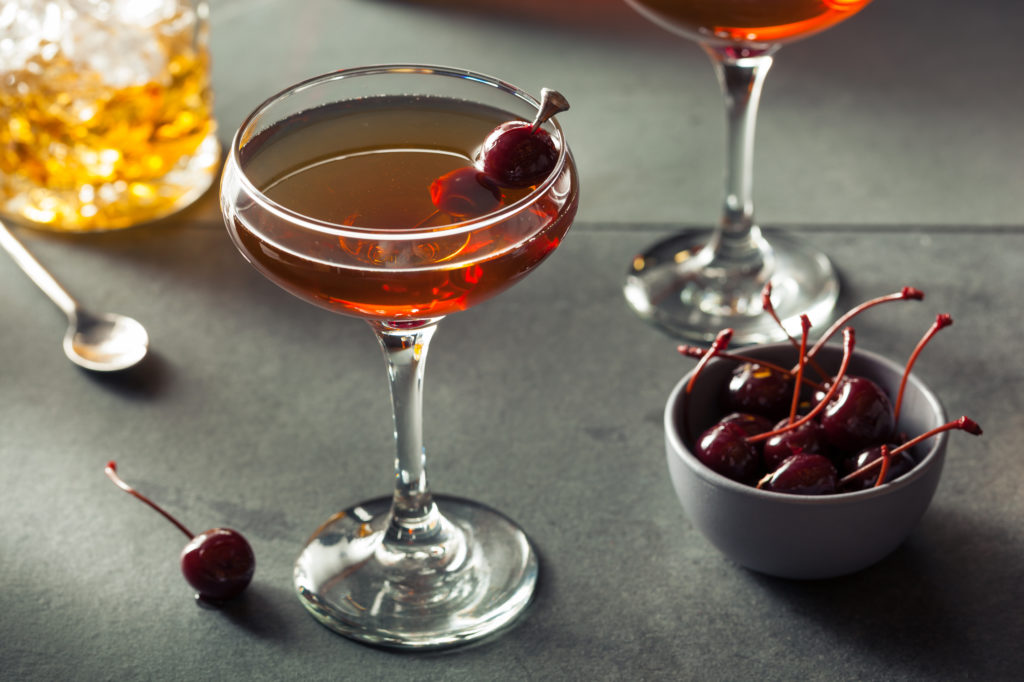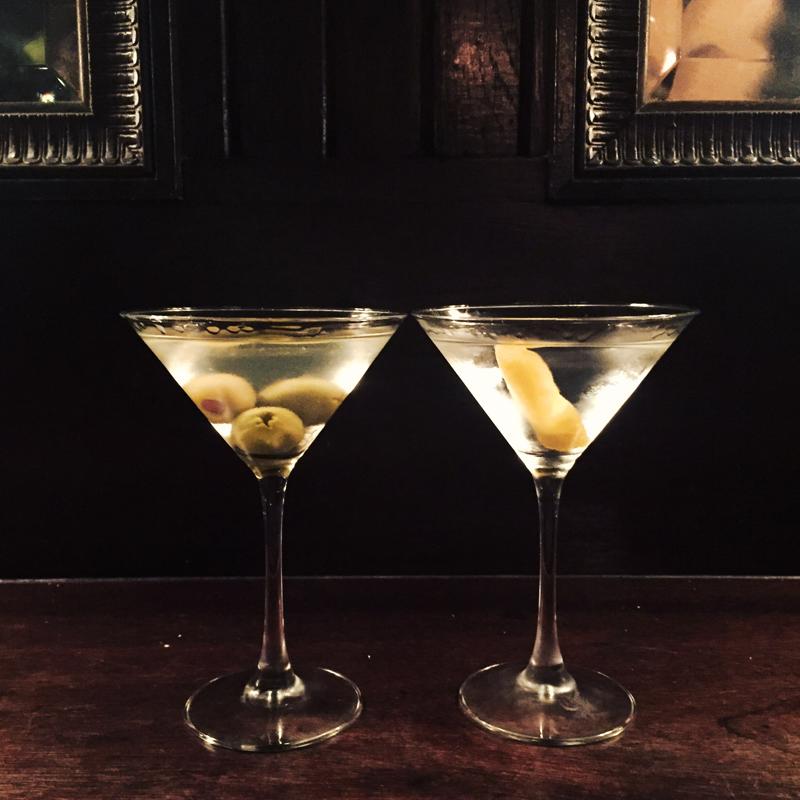
The Manhattan is a great example of a classic cocktail that features bitters.
When it comes to making cocktails, no bar cart is complete without some bitters. Most classic cocktails simply don’t work without a dash of bitters, and the more you experiment with craft drinks, the more varieties of bitters you’ll need to add complexity to your beverages. After all, why would you serve a delectable meal alongside a subpar cocktail? Here’s what everyone seeking their online cooking certificate should know about bitters:
What are bitters?
These cocktail additives are typically made with herbs, spices and barks – in addition to whatever fruit they’re meant to take the flavor of if it’s a flavored bitter – and alcohol. There are multiple varieties of bitters that are best for different types of cocktails. The ones that probably seem most familiar to an amateur mixologist are Angostura Aromatic Bitters. This style of bitters is one of the oldest in history, with a secret recipe that we only know contains cardamom, nutmeg and cinnamon. Other varieties include Peychaud’s, orange, grapefruit, fruit and celery bitters.
Bitters started making appearances in pharmacies and bars back in the 18th century, used as medicine and additions to alcoholic drinks. In fact, they even used to be used as medicinal tonics back in the 1700s, according to Serious Eats, and some modern people even believe that they can help promote a healthy digestive system. However, when prohibition began, most bitters companies went out of business. Even after it was repealed, the demand for bitters wasn’t what it used to be. In fact, it wasn’t for a few more decades that they experienced a resurgence.
 Vermouth is a potable bitter.
Vermouth is a potable bitter.A dash is a dash
Chances are, your cocktail recipe will call for a dash of bitters – so don’t add any more than that! Since bitters are made of spices and other strong flavors, a little bit goes a long way. Adding too many bitters to your cocktail is a flub that even adding more booze can’t solve.
Potable or non-potable
The term “potable” means that these bitters aren’t too strong to be consumed alone – like vermouth or Campari. Angostura or any type of fruit bitter, though, is non-potable. Typically, if a recipe calls for bitters without expressing a certain type, like vermouth, it’s safe to assume you should use non-potable bitters.
What to use?
In many cases, you’ll be just fine keeping a bottle of aromatic bitters on hand. However, if you’re working on a complete bar, you may be wondering how often you’ll need other varieties and how you should know what to use. Tales of the Cocktail laid out these guidelines:
- Use aromatic bitters in cocktails made with oak-aged liquor, like whiskey or bourbon.
- Use citrus bitters in cocktails made with light liquor, like vodka or gin.
- Use Peychaud’s bitters in Sazeracs. This cocktail made with cognac and absinthe originated in New Orleans, as did Peychaud’s.
- Use celery bitters for cocktails made with vermouth or sherry. You can also add them to your bloody Marys, or other savory cocktails.


